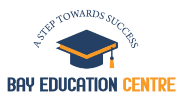In the dynamic world of Teaching Strategies for Level 5 diploma in education and training, educators play a pivotal role in shaping the learning experiences of their students. Achieving excellence in teaching goes hand in hand with understanding the nuances of curriculum design, student engagement, and effective communication.
Why are Teaching Strategies Important?
Teaching strategies encompass a broad range of techniques and methods employed by educators to facilitate effective learning experiences in the classroom. These strategies are essential components of instructional planning, helping teachers engage students, convey information, and foster a positive and inclusive learning environment.
One fundamental teaching strategy is active learning, which encourages students to participate actively in the learning process. This can involve group discussions, problem-solving activities, and hands-on projects, promoting deeper comprehension and retention of information. By shifting from a passive to an active role, students become more invested in their education.
Differentiated instruction is another crucial strategy that acknowledges the diversity of learners in a classroom. This approach involves tailoring teaching methods, content, and assessments to accommodate individual learning styles, strengths, and areas of improvement. It ensures that every student can succeed, regardless of their background or abilities.
What are Adaptive Teaching Strategies?
Adaptive teaching strategies refer to the flexible and responsive approaches that educators employ to meet the diverse learning needs of their students. In essence, it involves tailoring instructional methods to accommodate various learning styles, abilities, and preferences within a classroom. These strategies recognize that every student is unique, possessing distinct strengths, challenges, and ways of understanding information. By embracing adaptive teaching strategies, educators foster a more engaging and effective learning experience, promoting not only academic success but also the development of critical thinking skills and a love for learning among their students.
Quality First Teaching (QFT) strategies:
QTF strategies are fundamental approaches employed by educators to provide high-quality, inclusive, and effective instruction in the classroom. These strategies aim to create an environment that meets the diverse needs of students, fostering engagement, understanding, and academic success.
One key aspect of QFT strategies is the incorporation of differentiated instruction. This involves tailoring teaching methods, materials, and assessments to accommodate the varied learning styles, abilities, and preferences of students. By recognizing and addressing individual differences, educators ensure that each student has access to the necessary support and challenges required for their academic growth.
Assessment For Learning Qft Strategies:
Educators employ formative assessments to gauge student understanding throughout the learning process, allowing for timely adjustments to instruction. These assessments provide valuable insights into individual and collective progress, guiding educators in tailoring their teaching methods to address specific learning needs. Ultimately, Quality First Teaching strategies prioritise creating a learning environment that is accessible, engaging, and responsive to the needs of all students. By implementing these strategies, educators lay the foundation for a positive and impactful educational experience, setting the stage for academic achievement and fostering a lifelong love of learning.
Customised Curriculum Design:
Tailoring the curriculum to the Level 5 Diploma in education and training standards is the foundation of successful teaching. Ensure that the content is not only aligned with the prescribed guidelines but also incorporates real-world applications. Teaching and Learning Strategies not only engage students but also prepare them for the challenges they might encounter in their future careers.
Interactive Learning Methods:
Embrace a variety of teaching methods that foster active student participation. Whether it’s through group discussions, case studies, or hands-on projects, incorporating interactive elements into lessons can significantly enhance comprehension and retention. This not only aligns with Google’s guidelines but also reflects a commitment to creating a positive and engaging learning environment.
Utilising Technology Effectively:
Leverage technology as a tool to enhance the learning experience. This can include multimedia presentations, online resources, and collaborative platforms. However, it’s crucial to strike a balance and ensure that technology supplements the learning process rather than overshadowing it. Google values content that is user-friendly, so keep the user experience in mind when integrating technology.
Inclusive Teaching Practices:
Recognize and accommodate diverse learning styles within the classroom. Implementing inclusive teaching practices ensures that all students, regardless of their background or abilities, have equal access to educational content. Google appreciates content that is accessible to a broad audience, and prioritising inclusivity aligns with these principles.
Continuous Assessment and Feedback:
Implement a system of continuous assessment to gauge student progress. Regular feedback provides students with valuable insights into their strengths and areas for improvement. Additionally, it allows educators to adjust their teaching strategies accordingly, ensuring that the learning experience remains effective and relevant.
Professional Development:
Stay abreast of the latest educational trends and methodologies. Engage in continuous professional development to enhance your teaching skills and bring fresh perspectives to the classroom. This commitment to lifelong learning not only benefits educators but also contributes to the overall quality of education provided at the Level 5 Diploma level.
Conclusion
Crafting impactful learning experiences at the Level 5 Diploma level requires a holistic approach that combines curriculum design, interactive methods, technology integration, inclusivity, continuous assessment, and ongoing professional development. By embracing these strategies, educators can create an enriching educational environment that aligns with Google’s content guidelines while preparing students for success in their academic and professional journeys.




